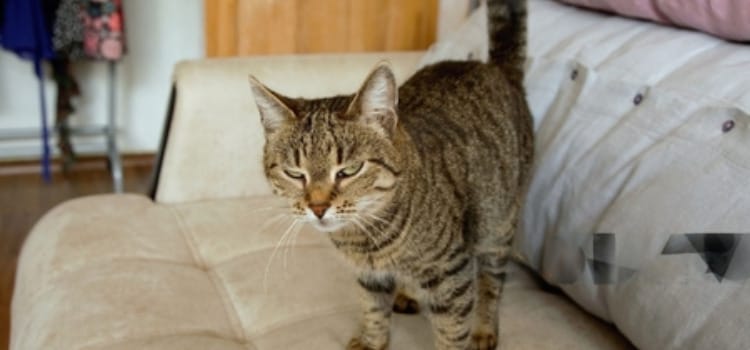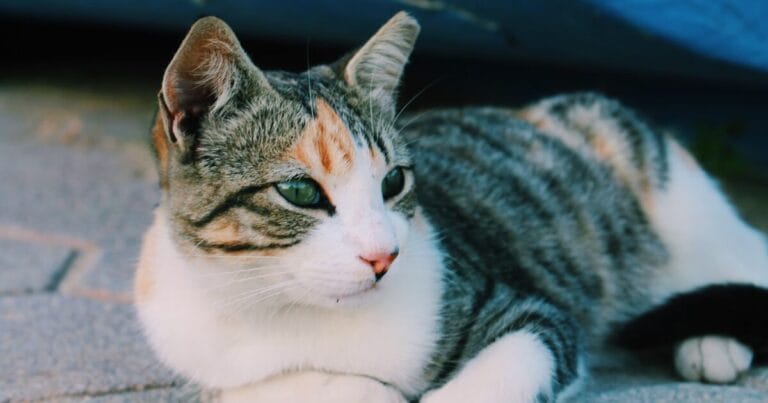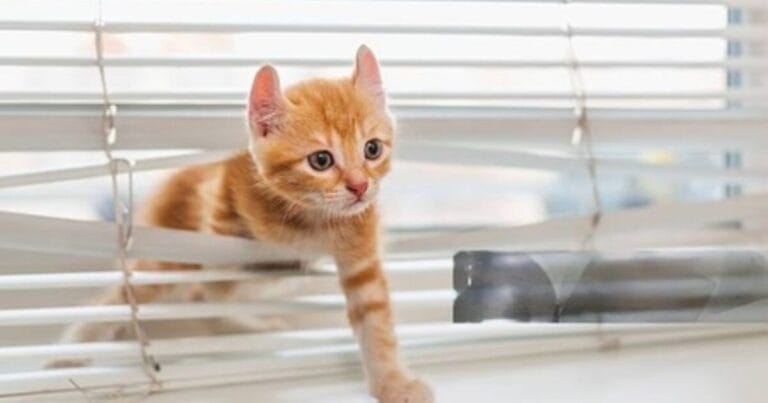Discovering that your cat has decided to use your couch as its restroom can be frustrating and saddening. However, it is essential to understand the reasons behind how to protect the couch from cat pee behavior to find a lasting solution. This guide explores the factors that may lead to feline couch urination, such as territorial disputes or health issues.
It also provides step-by-step methods for protecting your furniture, cleaning up after incidents, and preventing future occurrences. Together, let’s embark on a journey towards restoring harmony in your home and creating an environment for you and your feline companion.
Section 1: Protecting Your Couch
Keeping your sofa free from cat urine is essential for maintaining a pleasant and inviting atmosphere in your home. Here are some practical ways to protect your furniture.
1. Understand the Urge:
Remember, it’s essential to understand that when cats urinate on your couch, it’s not because they’re spiteful or mean. Usually, it indicates that they are feeling stressed, uncomfortable, or possibly dealing with a problem. Remembering this will allow you to address the issue with empathy and patience.
2. Waterproof Covers:
Consider purchasing a waterproof couch cover or pet-friendly fabric for sofas. These protective covers are specifically designed to shield your couch from any moisture. It can be easily cleaned, guaranteeing that accidents won’t result in lasting damage.
4. Regular Cleaning:
Establishing a cleaning routine for your couch is essential, even without accidents. Make sure to use cleaners that are specifically formulated for odors and stains. These cleaners work by breaking down the urine at a level that helps decrease the likelihood of your cat marking the spot again.
5. Double-Sided Tape or Aluminum Foil:
Cats dislike the feel of sticky tape and the sound of foil. Placing these on your couch when you’re not using it can deter your cat from jumping on and marking it.
6. Use Cat Repellents:
Certain scents, like citrus or commercial cat repellents, can discourage your cat from approaching the couch. Apply these around your sofa, but test a small area first to ensure it doesn’t damage the material.
7. Provide Alternatives:
Ensure your cat has plenty of appropriate places to urinate. Keep the litter box clean, accessible, and in a quiet location. Consider having more than one box if you have multiple cats.
8. Positive Reinforcement:
When your cat uses the litter box instead of the couch, reward them with treats, affection, or playtime. Positive reinforcement can encourage good behavior.
9. Consult a Veterinarian:
If your cat suddenly starts urinating on the couch, it could be a sign of a health issue. A vet can rule out or treat any medical problems.
10. Behavioral Modification:
Sometimes, stress or anxiety is the root cause. Consider environmental changes, pheromone diffusers, or consult a feline behaviorist to address underlying issues.
11. Stay Calm and Patient:
Reacting negatively to accidents can increase your cat’s stress and exacerbate the problem. Stay calm and focus on solutions rather than punishment.
By implementing these strategies, you can protect your couch from cat urine and create a more pleasant living space for you and your pet. Remember, patience and consistency are key. Understanding your cat’s behavior and needs will go a long way in preventing future incidents.
Section 2: Understanding Cat Behavior:
Understanding why cats urinate on couches is the first step toward preventing this distressing behavior. Various factors, from territorial instincts to health issues, influence this behavior.
Here’s a closer look at the common reasons and what they mean for your approach to resolution:
- Territorial Marking:
Cats are territorial animals, and urinating can be a way of claiming an area, especially in homes with multiple cats or new pets. They may choose the couch because it’s a central part of your living space and carries your scent strongly.
Solution: Reinforce positive territorial feelings with dedicated cat spaces and ensure each cat has their resources, like beds and litter boxes.
2. Medical Issues:
Health problems such as urinary tract infections, kidney issues, or diabetes can lead to inappropriate urination. Pain or discomfort while using the litter box might cause your cat to associate the packet with negative feelings and look for other places to go.
Solution: Regular veterinary check-ups are vital. If your cat suddenly changes its habits, a vet visit is essential to rule out or treat medical causes.
3. Behavioral Problems:
Stress, anxiety, or changes in the environment (like moving to a new house or the arrival of a new family member) can cause your cat to urinate on the couch. Cats crave routine, and disruptions can lead to stress-related behaviors.
Solution: Maintain a stable environment, provide hiding places and perches, and consider pheromone diffusers to reduce anxiety. In severe cases, a professional cat behaviorist can offer tailored advice.
4. Litter Box Problems:
The litter box’s state, type, and location play a significant role. They might avoid it if it’s too dirty, in a high-traffic area, or not to your cat’s liking (some prefer open to closed boxes, for example).
Solution: Keep the litter box clean, private, and accessible. Have one more package than the number of cats in your household, and try different types of containers and litter to find what your cat prefers.
5. Inadequate Training:
Especially in kittens or cats new to your home, they might need to learn where to urinate properly. If they start by having an accident on the couch, they might continue thinking it’s an appropriate spot.
To prevent such incidents and ensure effective couch protection from pets, consider using training aids, such as pet-friendly repellents or sofa covers, to create a deterrent and guide them towards designated areas for elimination.
Solution: Reinforce litter box use with positive reinforcement. Gently place them in the litter box at times they’re likely to go, such as after meals or naps, and praise them when they use it.
6. Attention-Seeking Behavior:
Sometimes, cats urinate on the couch to get your attention. This is more likely if they feel neglected or their routine has changed dramatically.
Solution: Ensure your cat gets regular interactive playtime and affection. Understand that negative attention is still attention; avoid scolding and instead focus on positive reinforcement.
7. Old Age:
As cats age, they may develop cognitive issues similar to dementia, leading to confusion and inappropriate urination. They might also struggle to reach the litter box in time due to mobility issues.
Solution: Be patient and consult your vet for ways to help manage your senior cat’s needs, including potentially providing more accessible litter boxes.
In understanding the “whys” behind your cat’s behavior, you can tailor your approach to meet their needs and solve the problem more effectively. Each cat is unique, so observing and understanding your specific pet is vital. When in doubt, professional advice from a vet or a cat behaviorist can provide valuable insights tailored to your situation.
Section 3: Cleaning Strategies:

Once your cat has urinated on the couch, cleaning it thoroughly to prevent repeat offenses and maintain a hygienic living space is crucial. Here’s a step-by-step guide to effectively clean cat urine from your couch:
1. Act Quickly:
The sooner you address the urine, the better. Fresh stains are easier to clean, and quick action can prevent the urine from soaking deeply into the cushions.
2. Blot the Area:
Use paper towels or a clean cloth to blot up as much urine as possible. Avoid rubbing; this can spread the stain and push the urine more deeply into the fabric.
3. Enzymatic Cleaners:
This is a frequently asked question about how to get cat urine smell out of the couch after it has dried but enzymatic cleaners are designed to break down the proteins in urine, effectively removing the stain and odor. Apply according to the instructions on the bottle, usually by soaking the affected area and letting it sit for the recommended time.
4. Rinse and Repeat:
After the enzymatic cleaner has done its job, rinse the area with clean water. Blot up the excess water and apply cleaner if the smell or stain persists. It may take several applications for complete removal.
5. Air Dry:
Let the cleaned area air dry completely. Avoid using heat, as it can set any remaining odors or stains. Place couch outside in the sun if possible, as UV rays can help neutralize odors.
6. Baking Soda:
Once the area is dry, sprinkle baking soda over the spot to absorb any lingering odors. Let it sit for a few hours or overnight, then vacuum it.
7. Test for Colorfastness:
Before using any cleaning solution, test it on a small, inconspicuous area of your couch to ensure it doesn’t cause discoloration or damage.
8. Avoid Ammonia-Based Cleaners:
Ammonia can mimic the smell of urine and may encourage your cat to urinate in the same spot again. Stick to enzymatic cleaners or mild dish detergent and water for best results.
9. Consider a Professional:
If the urine has soaked deeply into the couch or you cannot remove the odor and stain, it might be time to call in professional upholstery cleaners.
10. Preventive Measures:
Once the area is clean, consider using a waterproof cover or deterrents to keep your cat away from the couch in the future, ensuring effective couch protection from pets.
Cleaning cat urine promptly and effectively prevents long-term damage and recurring incidents. Remember that patience and persistence are essential, as some stains may require multiple treatments to remove entirely.
Maintaining a clean, odor-free couch will create a more pleasant living environment for you and your cat.
Section 4: Precautionary Measures:
Preventing your cat from urinating on the couch requires strategy, understanding, and sometimes patience.
Here are detailed measures you can take to stop this behavior and maintain a peaceful, clean living space:
1. Maintain a Clean Litter Box:
Cats are fastidious creatures and prefer a clean place to do their business. Scoop the litter box daily and change the litter regularly. If you have multiple cats, you might need more than one litter box to keep everyone happy and prevent territorial disputes.
2. Location Matters:
Place litter boxes in quiet, accessible locations where your cat feels safe. Avoid areas with high foot traffic or loud noises that might discourage your cat from using the box.
3. Litter Preferences:
Cats can be particular about the type of litter they use. Some prefer fine-grained litter, while others might like a coarser texture. If you notice your cat is avoiding the litter box, try different types of waste to see which one they prefer.
4. Provide Enough Resources:
In multi-cat households, provide enough resources for all cats. This includes litter boxes, food and water bowls, beds, and toys. The general rule is one item per cat plus one extra.
5. Stress Reduction:
Identify and minimize stressors that might cause your cat to urinate on the couch. This might include changes in the household, new pets, or a lack of attention. Provide a stable environment, and consider tools like pheromone diffusers to help calm your cat.
6. Regular Veterinary Check-Ups:
Health issues can lead to inappropriate urination. Regular check-ups can catch and address medical problems early before they lead to behavior issues.
7. Behavioral Training:
Encourage the use of the litter box through positive reinforcement. Whenever your cat uses the litter box, offer praise, treats, or playtime. Make the litter box the most appealing place for your cat to do their business.
8. Blocking Access:
Temporarily restrict access to the couch when you’re not around to supervise. Use pet gates or close doors to make the area inaccessible.
10. Environmental Enrichment:
Provide plenty of stimulation for your cat, especially if left alone for long periods. Toys, climbing structures, and interactive play can reduce boredom and anxiety, leading to fewer behavioral issues.
11. Odor Removal:
Ensure all traces of cat urine odor are removed from the couch, as lingering smells might entice your cat to re-mark the area. Use enzymatic cleaners designed for pet odors, specifically targeting effective cat urine odor removal.
12. Consult a Professional:
If you’ve tried everything and your cat continues urinating on the couch, it may be time to consult a veterinarian or a feline behaviorist, especially if you’re dealing with persistent issues related to couch maintenance for cat owners. They can provide tailored advice and support for your specific situation, offering insights into effective sofa care for cat households.
Understanding your cat’s needs and behavior is critical to maintaining a harmonious home where you and your pet can relax and enjoy your time together.
Section 5: Behavioral Insights:
Understanding the underlying reasons behind why your cat is peeing on the couch is vital to addressing the issue effectively. This section delves into the behavioral insights and psychological aspects that might be causing this distressing habit.
1. Medical-Related Behavior:
Certain medical conditions can increase urination or discomfort while using the litter box. If your cat associates the litter box with pain due to a medical issue, it might seek other places (like your couch) to relieve itself.
Insight: Regular veterinary check-ups are crucial to rule out or treat underlying health issues. Be observant of changes in your cat’s litter box habits and seek veterinary advice if you notice unusual behavior.
2. Inadequate Litter Box Training:
Some cats, especially those adopted at an older age or living outdoors, might have needed to be adequately trained to use a litter box. They may need to understand that the litter box is the appropriate urination place.
Insight: Reinforce litter box training, regardless of your cat’s age. Guide them gently to the litter box after meals and play sessions, and reward them for using it correctly.
3. Preference and Aversion:
Cats prefer specific substrates to urinate on, and they might develop an aversion to their litter box for various reasons, such as its cleanliness, location, or the type of litter used. If your couch’s material is more appealing, your cat might choose it over the litter box.
Insight: Experiment with different litter and litter boxes to find your cat’s preference. Keep the litter box clean and in a quiet, accessible location.
4. Old Age and Cognitive Decline:
As cats age, they can experience cognitive decline, leading to confusion and changes in behavior, including forgetting the location of their litter box or the routine they’ve followed for years.
Insight: Be patient with senior cats and provide them with easily accessible litter boxes. Consult your vet for ways to support your aging cat’s health and comfort.
5. Attention-Seeking:
Sometimes, cats urinate on the couch to get your attention, especially if they feel neglected or if there have been recent changes to their routine or environment.
Insight:
- Ensure your cat feels included and loved.
- Spend quality time daily playing, grooming, and interacting with your cat.
- Address any changes in your household that might be affecting them.
You can better address the root causes of your cat’s inappropriate urination by gaining a deeper understanding of these behavioral insights.
Each cat is unique, and what works for one might not work for another. Observing your cat’s behavior, providing a supportive environment, and seeking professional advice are crucial to creating a harmonious living situation for you and your feline friend.
Section 6: Health and Stress Factors:
Addressing your cat’s health and stress levels is crucial in preventing inappropriate urination behaviors like peeing on the couch. Understanding and mitigating these factors can lead to a healthier, happier cat and a cleaner, more harmonious home.
1. Recognizing Health Issues:
Various medical conditions can cause or contribute to your cat urinating outside the litter box. Issues such as urinary tract infections (UTIs), bladder stones, kidney disease, diabetes, and even arthritis can make urination painful or frequent, prompting your cat to urinate in places other than the litter box.
Action: Regular veterinary check-ups are vital. If you notice changes in your cat’s urination patterns or frequency or are in pain, consult your vet immediately to rule out or address health issues.
2. Environmental Enrichment:
A lack of stimulation can lead to stress and boredom, potentially resulting in unwanted behaviors. Cats need mental and physical stimulation to stay healthy and happy.
Action: Ensure your cat has plenty of toys, scratching posts, and climbing areas. Engage in daily play sessions and consider interactive toys that challenge their hunting instincts. Window perches can also provide hours of entertainment.
3. Diet and Nutrition:
A poor diet can lead to health issues that cause or exacerbate urination problems. For instance, certain foods can increase the risk of urinary tract issues.
Action: Feed your cat a balanced, high-quality diet suitable for their age, health status, and lifestyle. Consult with your vet to choose the best food option, especially if your cat has a history of urinary problems.
4. Litter Box Hygiene:
An unclean litter box can be off-putting to cats, leading them to seek other places to urinate. Conversely, overly scented or harsh cleaning products can also deter them.
Action: Clean the litter box regularly, remove waste daily, and change the litter often. Avoid strong chemicals or heavily perfumed cleaners that might offend your cat’s sensitive nose.
5. Accessibility:
As cats age or have mobility issues, reaching the litter box can become challenging, especially if it’s in a hard-to-reach area or they must climb stairs.
Action: Ensure the litter box is easily accessible, particularly for older or physically challenged cats. Consider having multiple litter boxes in different areas of your home.
6. Social Dynamics in Multi-Cat Households:
In homes with multiple cats, competition or bullying can lead to stress and anxiety. A cat that feels threatened or dominated may urinate on the couch as a form of stress relief or territorial marking.
Action: Monitor the social dynamics between your cats. Provide multiple resources (litter boxes, feeding stations, resting areas) to reduce competition and ensure each cat has its own space.
By understanding and addressing these health and stress factors, you can create a supportive environment that encourages appropriate litter box use and reduces the likelihood of your cat urinating on the couch.
Section 7: Litter Box Considerations:
The litter box is pivotal in your cat’s life and is often a central factor in preventing inappropriate urination. Understanding and optimizing litter box conditions can significantly reduce the chances of your cat choosing the couch over the appropriate spot.
Here’s how to ensure your litter box is up to par:
1. Number of Litter Boxes:
In a multi-cat household, the general rule is to have one more litter box than the number of cats. This helps prevent competition and ensures each cat can access a clean container.
Additionally, cat owners often wonder, “Does cat litter expire?” It’s essential to be aware of the shelf life of cat litter to maintain its effectiveness and ensure a comfortable environment for your feline friends.
Action: If you have two cats, maintain three litter boxes. Please place them in different areas of your home to give your cats options and privacy.
2. Size and Style of the Box:
Cats prefer a litter box with plenty of room to move around. If the package is too small or has high sides, it might be uncomfortable or difficult for them to use, especially for kittens or older cats.
Action: Choose a large, open litter box or one with low sides. If you have a covered container, try removing the lid to see if your cat prefers it that way.
3. Location, Location, Location:
A litter box should be in a quiet, low-traffic area where your cat feels safe and undisturbed. Avoid placing it next to noisy appliances or in busy corridors.
Action: Evaluate your home from your cat’s perspective and choose calm, accessible spots for the litter boxes. Ensure they are visible enough, as cats won’t use a box they can’t easily find or access.
4. Cleanliness is Key:
A dirty litter box is one of the most common reasons cats choose other places to urinate. Cats are clean creatures and prefer a tidy environment for their business.
Action: Scoop the litter box at least once a day and change the litter entirely regularly. Wash the container with mild soap and water to keep it fresh during litter changes.
5. Type of Litter:
Cats can be particular about the texture and scent of their litter. Some prefer fine-grained clumping litter, while others might like a coarser feel. Highly perfumed litter can also be off-putting.
Action: If your cat avoids the litter box, experiment with different types of unscented litter to find their preference. Observe how they react to each kind and stick with what works best.
6. Depth of Litter:
Cats have individual preferences for how deep they like their litter. Some prefer a shallow layer to avoid sinking in, while others might enjoy a deeper pile for digging and covering.
Action: Start with a medium depth of about 2-3 inches and adjust as needed based on your cat’s behavior. Notice if they try to dig to the bottom or hesitate to step in.
7. Privacy Matters:
While some cats don’t mind, others require privacy when using the litter box. A busy or exposed area might discourage them from using it.
Action: Consider a box with a cover for privacy or place the container in a more secluded area. However, always ensure that the pack remains easily accessible and well-ventilated.
8. Avoid Sudden Changes:
Cats aren’t fans of sudden change. If you need to switch litter types, move the box, or make any other changes, do so gradually.
Action: Introduce new litter by mixing it with the old type over a week or more. If moving the box, move it gradually over several days to the new location.
9. Monitor for Issues:
Be observant of your cat’s litter box habits. Frequent attempts to urinate, meowing in the box, or other unusual behaviors can indicate medical problems.
Action: Regularly watch your cat’s litter box behavior and consult your vet if you notice anything unusual.
By thoroughly considering these litter box factors, you’re not just providing a space for your cat to relieve itself but a comfortable, welcoming, and stress-free environment that your cat will want to use. This is one of the most effective strategies to prevent your cat from choosing your couch or other unwanted areas as an alternative.
Section 8: Multi-Cat Dynamics:
In households with more than one cat, the dynamics between the cats can significantly impact their behavior, including where they choose to urinate.
Understanding and managing these dynamics is crucial to maintaining harmony and preventing issues like one cat peeing on the couch. Here’s how to navigate the complexities of a multi-cat household:
1. Introductions and Socialization:
How cats are introduced to each other can set the tone for their future relationship. A rushed or forced introduction can lead to long-term tension and aggression.
Action:
- Introduce new cats slowly and gradually.
- Please keep them in separate areas first and let them smell each other under the door.
- Gradually increase their time together under supervision until they seem comfortable.
2. Observing Interactions:
Pay close attention to how your cats interact. Look for signs of bullying or one cat blocking access to essential resources like litter boxes or feeding areas.
Action: If you notice one cat constantly bullying another, you may need to separate and reintroduce them slowly. Ensure multiple paths exist to each resource so one cat can’t block another’s access.
3. Health Checks for All Cats:
In multi-cat households, monitoring all cats for signs of illness is essential, as stress from social dynamics can lead to health issues and behavioral problems.
Action: Regular veterinary check-ups for all cats can catch and address health issues before they lead to behavioral changes like inappropriate urination.
4. Resource Abundance:
A lack of resources can lead to competition and stress, which can, in turn, lead to issues like urinating on the couch. This is particularly true for litter boxes, where a cat may feel vulnerable.
Action: Provide an abundance of resources. The general rule is one resource per cat plus one extra (especially for litter boxes). Spread these resources throughout your home to prevent conflict.
5. Behavioral Support:
Sometimes, the dynamics in a multi-cat household can be challenging, and you might need professional help to address underlying issues.
Action: If you’re struggling to manage the relationships between your cats, consider consulting a feline behaviorist. They can provide targeted advice and strategies specific to your situation.
Managing multi-cat dynamics requires patience, observation, and sometimes a bit of trial and error. By understanding and respecting each cat’s needs and working to create a supportive environment.
Section 9: Last Resort Solutions:
When you’ve tried all the standard approaches and your cat continues peeking on the couch, it may be time to consider some last-resort solutions. These methods should be used with care and patience, as they often require more time or may involve changes that need adjustment from you and your cat.
1. Restricting Access:
As a temporary measure, you should restrict your cat’s access to the couch. This can prevent the habit from becoming further ingrained while you work on other solutions.
Action: Use pet gates, close doors, or cover the couch with something less appealing to your cat, like a plastic sheet, when you’re not supervising.
2. Professional Cleaning:
Sometimes, home cleaning methods aren’t enough to remove all traces of urine odor, which can continue to attract your cat back to the couch.
Action: Consider hiring a professional cleaning service specializing in pet odors and stains. They can often treat areas more thoroughly than you can at home.
3. Feline Pheromones:
Synthetic pheromones can help calm stressed or anxious cats, which might reduce inappropriate urination.
Action: Use diffusers, sprays, or collars that release calming pheromones in areas where your cat spends the most time, especially near the couch.
4. Behavioral Medication:
In some cases, especially where anxiety or stress is a significant factor, your veterinarian might recommend medication to help manage your cat’s behavior.
Action: Consult with your veterinarian about whether medication might be appropriate for your cat, and follow their guidance on its use.
5. Re-Training:
Sometimes, cats need a refresher on litter box use, especially if they’ve developed a strong habit of urinating elsewhere.
Action: Temporarily confine your cat in a small space (like a bathroom) with their litter box, food, water, and bed. Once they consistently use the litter box in that space, gradually give them more access to the rest of the house.
6. New Furniture:
In extreme cases, if a piece of furniture has been repeatedly soiled and you can’t remove the odor, it might continue to attract your cat.
Action: Consider replacing the couch or the affected cushions. This can be costly, but sometimes it’s the only way to remove the attractant entirely.
7. Consult a Feline Behaviorist:
If you cannot resolve the issue independently, a professional with experience in cat behavior can offer personalized advice and strategies.
Action: Look for a certified animal behaviorist or a veterinarian specializing in behavior. They can provide insights tailored to your cat’s specific situation.
8. Patience and Persistence:
Behavioral issues can take time to resolve, and there might be setbacks. It’s essential to remain patient and consistent in your approach.
Action: Track your cat’s behavior to identify patterns or triggers and adjust your strategies. Celebrate small successes, and don’t give up.
9. Environmental Changes:
Changing your cat’s environment can help alleviate stress or eliminate attractants.
Action: Add more vertical space, like cat trees or shelves, provide additional hiding spots, and ensure your cat has ample stimulation and interactive play.
10. Seek Support:
Dealing with persistent behavioral issues can be frustrating and disheartening. Remember, you’re not alone, and there’s support available.
Action: Connect with online forums, local pet groups, or friends who understand the challenges of living with cats. Sharing your experiences and learning from others can provide valuable support and new ideas.
Conclusion:
In conclusion, tackling the issue of a cat urinating on the couch involves a blend of understanding, strategic action, and patience.
By empathetically addressing the underlying causes of how to protect the couch from cat pee, whether medical, behavioral, or environmental, and implementing a comprehensive plan that includes cleanliness, stress management, and positive reinforcement, you can guide your cat toward healthier habits.
Remember, each cat is unique, and finding the right solution may take time and adaptation. With consistent effort, a supportive approach, and professional guidance, you can foster a harmonious living space where you and your feline friend feel comfortable and content.




